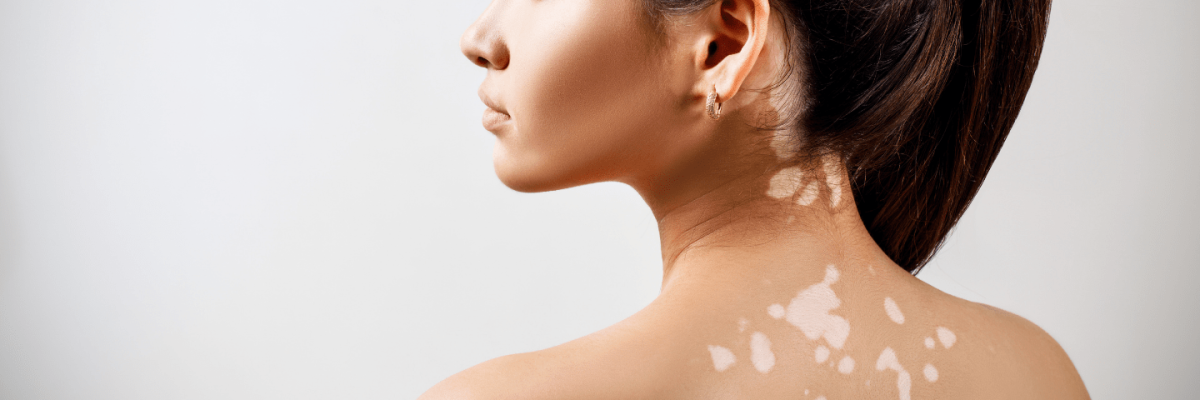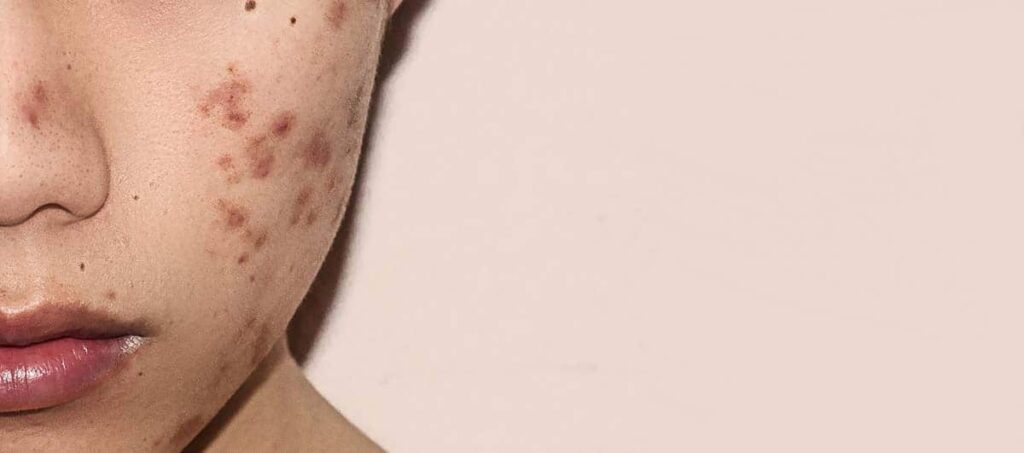
Depigmentation
At Sarayu Clinics, my goal is to help you achieve a flawless, even-toned complexion with the best depigmentation treatments available. Whether you struggle with melasma, hyperpigmentation, or other forms of skin discoloration, I, Dr. Adarsh Tripathi, have tailored solutions designed to target and treat pigmentation issues effectively.
Pigmentation concerns can affect anyone, regardless of skin type or age. Often triggered by environmental factors, hormonal changes, or genetic predisposition, these issues can lead to uneven skin tone, dark spots, and patches that detract from your skin’s natural radiance. In this guide, I will walk you through various depigmentation treatments, from laser therapies to non-invasive solutions like IV drips and chemical peels, to help you understand how each option works to brighten and balance your skin tone.
Understanding Pigmentation Issues
Pigmentation problems, such as melasma and hyperpigmentation, arise when there’s an overproduction of melanin, the pigment that gives skin its color. While some pigmentation can fade naturally, more persistent conditions require targeted treatments. Let’s explore these common concerns:
Melasma: A condition characterized by dark, blotchy patches on the skin, often caused by sun exposure, hormonal fluctuations (especially during pregnancy), or the use of birth control pills. Melasma typically appears on the face and can be difficult to treat without professional intervention.
Hyperpigmentation: This is the darkening of skin areas caused by an excess of melanin, often resulting from acne scars, sun damage, or injuries to the skin. It can affect large or small areas and varies in severity.
1. Melasma Treatment
Melasma is one of the more stubborn types of pigmentation disorders. At Sarayu Clinics, I take a personalized approach to treating melasma, using a combination of therapies to minimize its appearance and prevent recurrence. Here’s how I address melasma effectively:
Topical Treatments: Prescription-strength creams containing hydroquinone, tretinoin, or corticosteroids are often used to lighten dark patches. These can be combined with antioxidant serums to prevent further pigmentation.
Laser Therapy: Low-energy laser treatments, such as the Hollywood Spectra, can gently target the melanin deposits beneath the skin, breaking down the pigment without damaging surrounding tissues. This treatment is especially useful for melasma caused by sun exposure.
Chemical Peels: Mild chemical peels help to exfoliate the top layer of skin, encouraging cell turnover and fading dark patches. Peels containing glycolic acid or TCA are particularly effective for melasma.
By combining these therapies, I can tailor a treatment plan to your skin type and the severity of your melasma, ensuring optimal results over time.
2. Hyperpigmentation
Hyperpigmentation refers to dark spots or areas on the skin that result from excess melanin production. This can be caused by sun damage, acne scars, or injury to the skin, leading to uneven skin tone. I offer several treatments designed to reduce hyperpigmentation and restore a more uniform complexion:
Topical Treatments: Similar to melasma treatment, topical creams containing ingredients like vitamin C, kojic acid, or retinoids can help fade dark spots over time.
Microdermabrasion: This gentle exfoliation technique uses a diamond-tipped wand to remove the upper layers of dead skin cells, promoting the growth of new, healthy skin. By encouraging cell regeneration, microdermabrasion helps to reduce the appearance of hyperpigmentation and sun damage.
Fraxel Laser: For more stubborn cases, Fraxel Laser therapy can penetrate deep into the skin to break down pigmentation and stimulate collagen production. This non-invasive treatment is particularly effective for treating sun-induced hyperpigmentation.
Hyperpigmentation can take time to resolve, but with a customized treatment plan that combines both at-home care and in-office treatments, I can help you achieve a smoother, clearer complexion.
3. Skin Lightening
If you’re looking for a more comprehensive approach to skin brightening, I offer advanced skin lightening treatments that target discoloration, uneven skin tone, and dullness. My approach to skin lightening is gentle yet effective, helping you achieve a luminous complexion without harsh bleaching agents.
IV Drips: My signature IV Drips are formulated with skin-brightening ingredients like glutathione, an antioxidant known for its ability to lighten the skin by reducing melanin production. Regular IV treatments can lead to noticeable skin brightening, leaving you with a more even and radiant complexion.
Laser Toning: The Hollywood Spectra Laser Toning treatment is ideal for overall skin brightening. It targets the melanin in your skin, breaking down dark pigments and leaving your skin visibly lighter and more luminous.
Chemical Peels: Customized peels using ingredients like kojic acid or lactic acid can help brighten the complexion by removing layers of dead, pigmented skin cells. These peels encourage new skin growth, resulting in a lighter, more radiant complexion.
By combining these skin lightening treatments, I can help you achieve a natural, healthy glow without damaging your skin’s integrity.
4. Depigmentation with Laser
Laser therapy is one of the most effective treatments for reducing pigmentation and achieving a more even skin tone. At Sarayu Clinics, I use the latest in laser technology to treat a range of pigmentation issues, including melasma, sun spots, and age spots.
Hollywood Spectra Laser: This advanced laser uses a Q-switched system that targets melanin without damaging the surrounding skin. It works by breaking down pigmentation particles, allowing your body to naturally eliminate them. This treatment is ideal for both melasma and hyperpigmentation.
Fraxel Laser: As mentioned earlier, Fraxel Laser works deeper in the skin to not only treat pigmentation but also stimulate collagen production, improving skin texture and tone. This laser is ideal for patients who want a more comprehensive approach to skin rejuvenation.
Laser treatments are highly effective for pigmentation issues, but it’s essential to choose the right laser based on your skin type and concerns. I will guide you through the process, ensuring you achieve the best results.
5. Microdermabrasion
Microdermabrasion is a non-invasive exfoliation treatment that removes the top layers of dead skin cells, revealing fresher, brighter skin underneath. This treatment is an excellent option for patients with mild pigmentation, acne scars, or sun damage. It works by:
Exfoliating Dead Skin Cells: A diamond-tipped device is used to gently abrade the skin, removing surface-level pigmentation and encouraging new skin cell growth.
Boosting Circulation: The mechanical exfoliation also stimulates blood flow to the skin, promoting the delivery of oxygen and nutrients, which aids in skin repair and regeneration.
Microdermabrasion is a great option for those looking for a quick, low-downtime treatment that delivers visible improvements in skin texture and tone.
6. IV Drips for Depigmentation
IV Drip therapy is one of the most innovative treatments I offer for skin brightening and depigmentation. My custom-formulated IV Drips contain ingredients like glutathione, vitamin C, and other antioxidants that not only detoxify your body but also reduce melanin production from within.
Glutathione: This powerful antioxidant inhibits melanin production, leading to a gradual lightening of the skin. Regular treatments can help reduce pigmentation, giving you a brighter and more radiant complexion.
Vitamin C: This essential nutrient boosts collagen production and helps fade pigmentation by inhibiting the enzyme that produces melanin.
With IV Drips, you’ll not only see improvements in skin tone, but your skin will also benefit from enhanced hydration and overall rejuvenation.
7. Chemical Peels for Depigmentation
Chemical peels are one of the most popular treatments for depigmentation, offering a safe and effective way to lighten dark spots and even out skin tone. I offer a variety of peels, each tailored to your skin’s unique needs:
Superficial Peels: These mild peels use alpha-hydroxy acids (AHAs) or beta-hydroxy acids (BHAs) to exfoliate the top layers of skin. They are ideal for patients with mild pigmentation or sun damage.
Medium Peels: Using stronger ingredients like trichloroacetic acid (TCA), medium-depth peels penetrate deeper into the skin, addressing more
severe pigmentation issues, such as sun spots, melasma, or acne scars. Medium peels are highly effective for achieving significant improvement in skin tone and texture.
- Deep Peels: For patients with more pronounced pigmentation concerns, deep chemical peels using phenol or a high concentration of TCA can provide dramatic results. However, these peels require a longer recovery time but offer profound skin resurfacing and brightening effects.
Peels can be customized to suit your skin’s needs, and I will carefully evaluate your skin type to select the right peel that will give you the most effective results. Over a series of treatments, chemical peels can greatly reduce pigmentation, leaving your skin smoother, brighter, and more even.

Frequently Asked Questions (FAQs)
1. What causes hyperpigmentation and melasma?
Hyperpigmentation and melasma are primarily caused by an overproduction of melanin in the skin, often triggered by factors like:
- Sun Exposure: UV rays stimulate melanin production, leading to dark spots.
- Hormonal Changes: Pregnancy, birth control pills, and hormone replacement therapy can cause melasma.
- Skin Inflammation: Conditions like acne or eczema can leave dark marks once healed.
- Age: With age, sunspots and liver spots become more common due to cumulative sun exposure.
2. How many sessions are needed for laser depigmentation treatments?
The number of sessions depends on the severity of the pigmentation and the type of laser used. On average:
- Mild to Moderate Pigmentation: 3-5 sessions, spaced about 4-6 weeks apart.
- Severe Pigmentation or Melasma: May require more sessions for optimal results.
3. Are depigmentation treatments safe for all skin types?
Yes, depigmentation treatments are generally safe for all skin types. However, it’s essential to choose the right procedure for your specific skin tone and concern. At Sarayu Clinics, I customize treatment plans to match your skin type, whether it’s laser therapy, peels, or topical treatments.
4. Will my pigmentation return after treatment?
Pigmentation issues can recur if proper skincare is not maintained. Factors like sun exposure, hormonal changes, and skin trauma can lead to new pigmentation spots. However, using sunscreen, following a proper skincare routine, and undergoing maintenance treatments can help keep your results long-lasting.
5. What’s the difference between hyperpigmentation and melasma?
- Hyperpigmentation: Refers to dark spots or patches caused by excessive melanin production, often triggered by sun damage, inflammation, or skin injury.
- Melasma: A specific form of hyperpigmentation that usually appears as symmetrical patches on the face and is often related to hormonal fluctuations, particularly in women.
6. Is laser depigmentation painful?
Laser treatments for depigmentation are generally well-tolerated by most patients. You may experience mild discomfort during the procedure, but topical numbing creams can be applied to minimize this. Post-treatment, some redness and swelling might occur, but they usually subside within a few days.
7. How long does it take to see results from treatments like peels or laser therapy?
Results vary depending on the treatment:
- Laser Therapy: Initial results can be seen after the first session, but optimal results typically appear after a series of 3-5 sessions.
- Chemical Peels: Results are visible within a week as your skin begins to peel and reveal new, brighter skin beneath.
- IV Drip Therapy: Results build gradually over multiple sessions, with improvements in skin tone and radiance seen within a few weeks.
8. Are there any side effects to depigmentation treatments?
Most depigmentation treatments are safe and have minimal side effects, but some temporary side effects can include:
- Laser Therapy: Redness, mild swelling, and sensitivity for a few days post-treatment.
- Chemical Peels: Peeling, redness, and minor irritation as the skin exfoliates.
- Microdermabrasion: Mild redness or sensitivity that usually subsides within a day. I’ll always discuss potential risks with you before any treatment to ensure you’re comfortable and informed.
Schedule a consultation with Dr. Adarsh Tripathi at Sarayu Clinics today for Dermal Fillers Treatment in Dehi
- Phone: +91-9990333300,+91 8882870882
- Email: sarayuinquiries@gmail.com
- Sarayu Clinics website: https://sarayuclinics.com/
- Facebook: https://www.facebook.com/sarayuclinics/
- Instagram: https://www.instagram.com/sarayuclinics/
- Youtube: https://www.youtube.com/channel/UCnHOtwgrzMKAPQthvVShftg
- Adarsh Tripathi’s profile: https://sarayuclinics.com/luxury/about-us/
- Adarsh Tripathi’s Linkedin profile: https://in.linkedin.com/in/dr-adarsh-tripathi-a43005b8
- Online Booking: Visit our website at https://sarayuclinics.com/beauty/appointment/to schedule appointments conveniently.